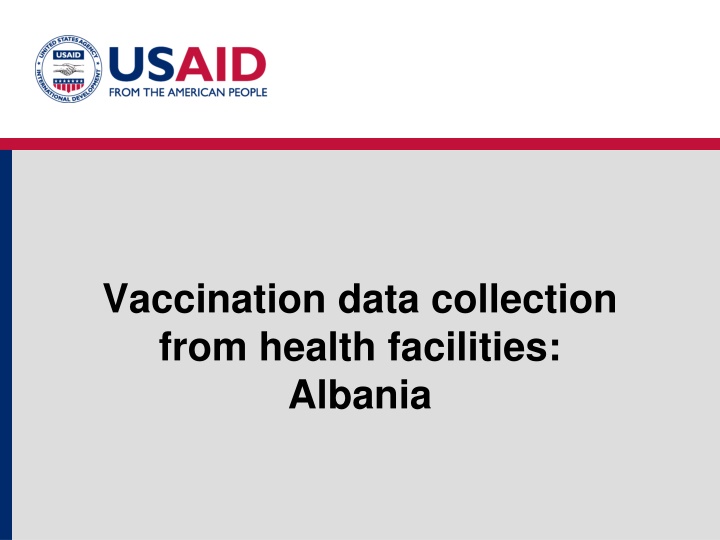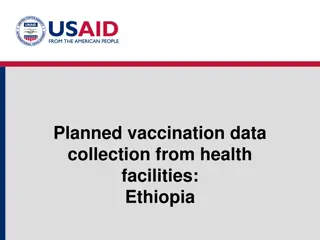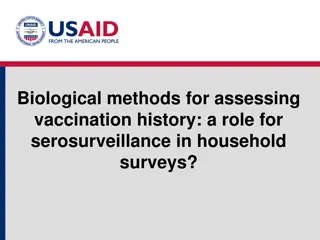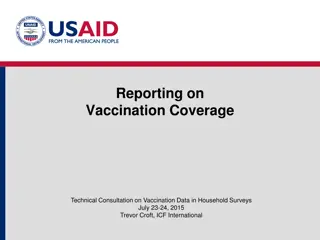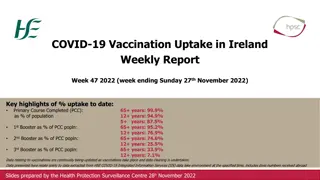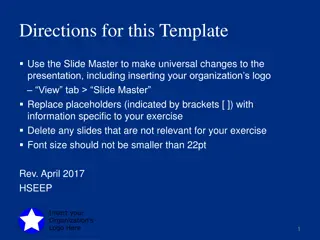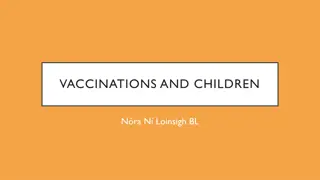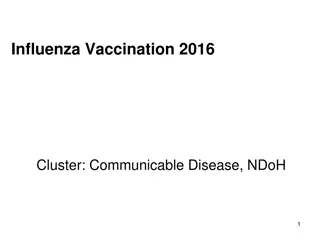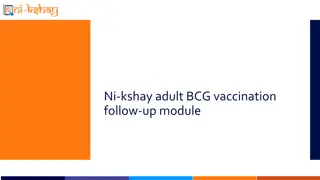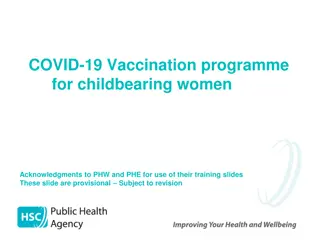Vaccination Data Collection and Health Facilities in Albania
Data collection on vaccination practices and health facilities in Albania reveals a system that includes a mix of public and private primary care centers, baby clinics, and health posts. Vaccination data is collected through home-based records, health facility records, and forms specifically designed for recording vaccination information. Health center workers play a key role in administering vaccines and maintaining accurate records to ensure compliance with national standards and schedules.
Download Presentation

Please find below an Image/Link to download the presentation.
The content on the website is provided AS IS for your information and personal use only. It may not be sold, licensed, or shared on other websites without obtaining consent from the author.If you encounter any issues during the download, it is possible that the publisher has removed the file from their server.
You are allowed to download the files provided on this website for personal or commercial use, subject to the condition that they are used lawfully. All files are the property of their respective owners.
The content on the website is provided AS IS for your information and personal use only. It may not be sold, licensed, or shared on other websites without obtaining consent from the author.
E N D
Presentation Transcript
Vaccination data collection from health facilities: Albania
Albania DHS 2008-09 Conducted by National Institute of Statistics (INSTAT) Institute of Public Health (IShP) Part of the Ministry of Health Fieldwork teams visited each enumeration area Point of contact in EA was the health center workers
Health care system in Albania Mixture of public and private Primary care centers baby clinics, health posts (fixed post sites and outreach activities) Outreach activities community participation Private sector primary and secondary care Private sector Mostly private doctors in urban areas Same national standards and vaccination schedule apply Same registration requirements Required to provide information to public health system when needed Urban areas - typically 1 (or 2) public health posts, possibly 1 (or 2) private doctors Rural areas - typically only one health post
Data collection Home-based records: Child health booklet (newer) Vaccination card (older) Mother s recall Health facility records
Health facility records Organized in paper registers by Date of birth First, father s and last name Register has one column for each type of vaccine recording vaccination date Data collection Team supervisor collected forms for each child from interviewers after household interview With help of health center worker, found each eligible child in the register Recorded dates of vaccination for each eligible child
Names DoB Polio DTP BCG Hib HepB
Results Home based record: No health facility record Health facility record found Total children under 5 Never had a card or booklet 6 113 (95%) 119 Vaccination card seen 12 815 (99%) 827 Child health booklet seen 0 206 (100%) 206 Either exists but not seen 23 250 (92%) 273 No longer has card or booklet 20 141 (88%) 161 Total children under 5 61 1525 (96%) 1586
Results Based on the union of Health facility record Vaccination card or child health booklet Mother s recall If vaccination was recorded in any of these ways it was accepted When dates conflicted, priority was given to the health facility record
Results DPT3 (children 12-23 months) Not recorded in health facility register* 2 Recorded in health facility register 30 Total children under 5 Interview: Not given 32 Vaccination date recorded on card 3 174 177 Vaccination marked on card (no date) 0 3 3 Reported by mother 6 46 52 Mother did not know 0 1 1 Total 10 254 265 * No vaccination record found in health facility, except 1 with no DPT3 on record
Key elements Ministry of Health involved in the survey Health center workers were point of contact in EA for interviewing teams Vaccination records in easily accessible register MoH required staff to give access to vaccination register Information ordered logically by date of birth (DoB) Identifying information needed was DoB, first, father s and last name. All vaccination data recorded in a single line in the register
